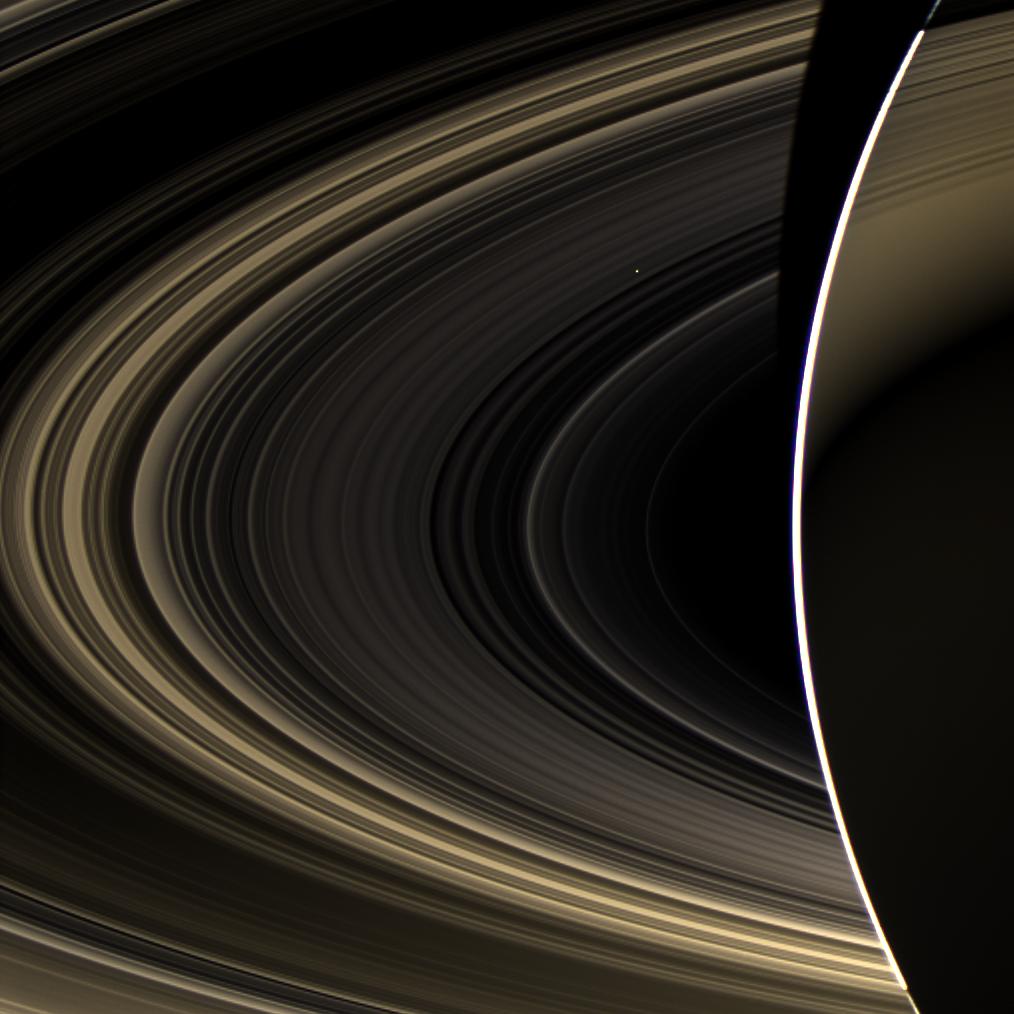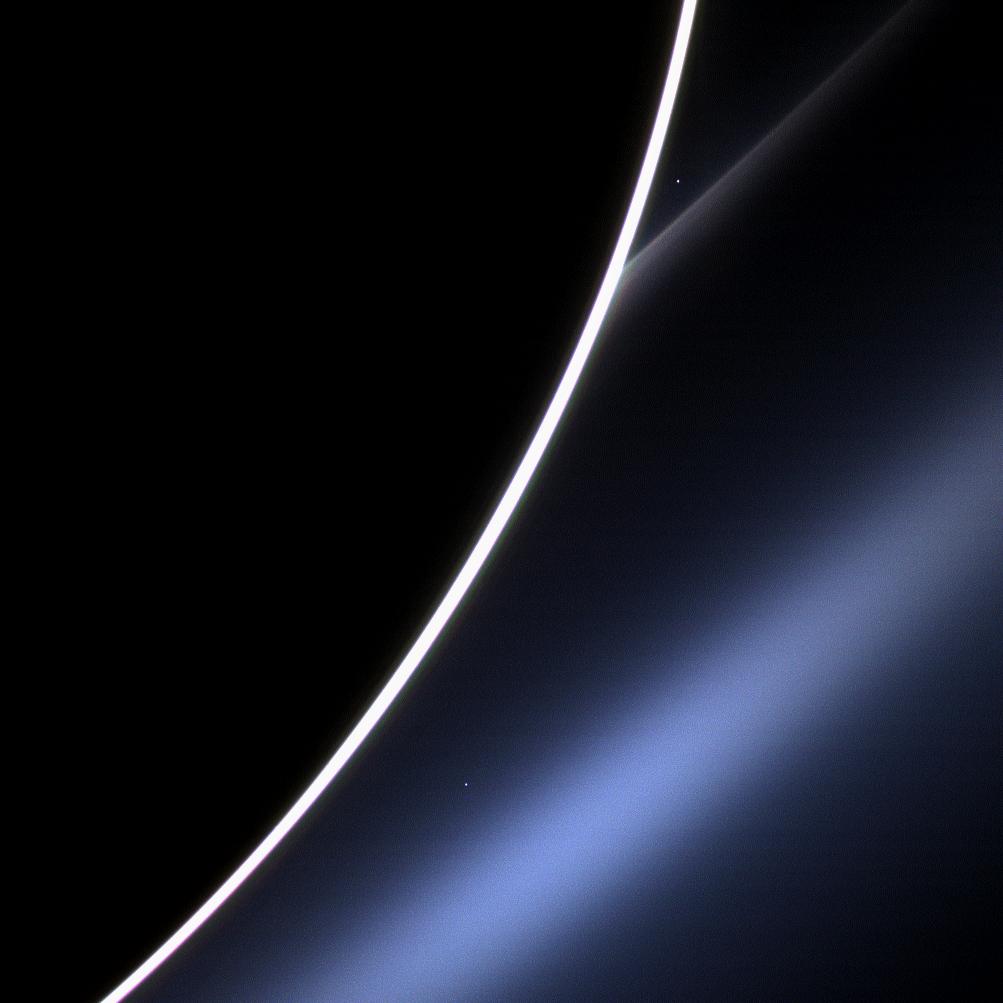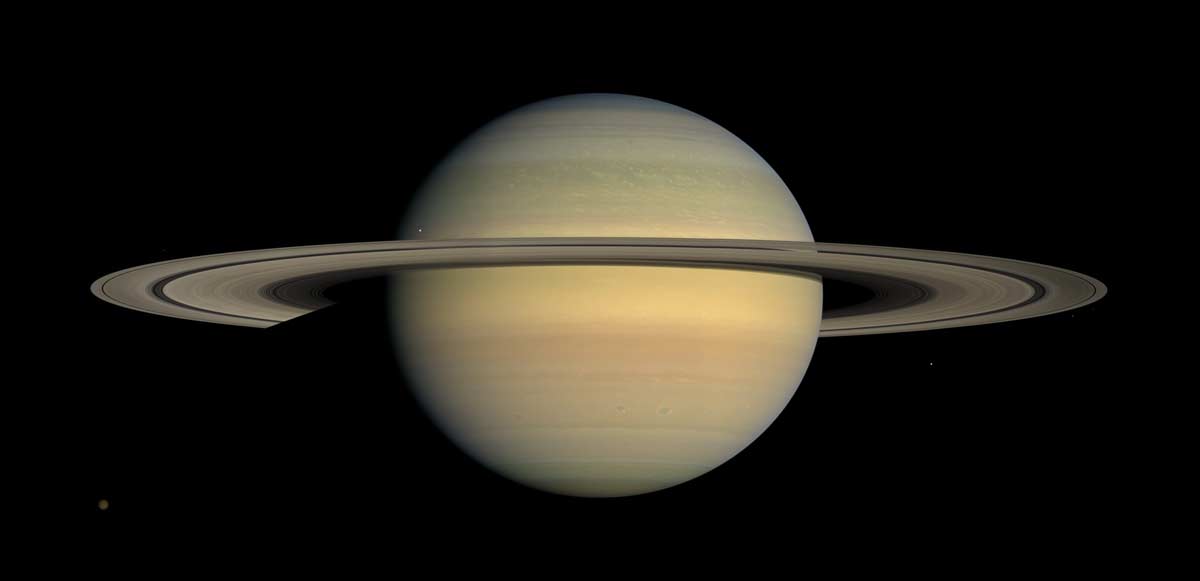
Venus gleams over Saturn's enormous shoulder in two stunning new photos captured by NASA's Cassini spacecraft, which is orbiting the ringed planet.
Earth's hellishly hot "sister planet" peeks through Saturn's iconic rings in one image, which Cassini took last November when it was in Saturn's shadow. Because of the vast gulf between the two worlds, the Earth-size Venus appears as a bright white dot, just above and to the right of the picture's center.
When it took the photo, Cassini was about 498,000 miles (802,000 kilometers) from Saturn and roughly 880 million miles (1.42 billion km) from Venus, researchers said. The probe was looking toward the unlit side of the rings from slightly below the ring plane. Each pixel in the image covers about 28 miles (44 km).

Cassini captured the other image on Jan. 4, when the probe was approximately 371,000 miles (597,000 km) from Saturn and 850 million miles (1.37 billion km) from Venus. Venus appears near the top of the photo, sandwiched between Saturn's bright, curving limb and its G ring. The scale in this view is 20 miles (32 km) per pixel. [Gallery: The Rings and Moons of Saturn]
The broad, fuzzy streak lower down is Saturn's E ring, which is generated by the icy plume of particles erupting from geysers on the planet's enigmatic moon Enceladus. The luminous point to the left of the E ring is a distant star, researchers said.
This isn't the first time Cassini has seen a planet from the inner solar system from its vantage point around Saturn. In 2006, the spacecraft snapped an amazing view of Earth as it appeared from the ringed planet. That photo, called "In Saturn's Shadow," is one of the most popular Cassini images taken to date, mission team members have said.
Though Venus is about the same size as Earth and has a similar rocky composition, conditions on the two planets' surfaces are very different. Astronauts walking around on Venus would experience pressures 100 times greater than those on Earth's surface and temperatures around 870 degrees Fahrenheit (466 degrees Celsius) — hot enough to melt lead.
Get the Space.com Newsletter
Breaking space news, the latest updates on rocket launches, skywatching events and more!
Both of these extremes are a result of Venus' thick, carbon-dioxide-dominated atmosphere, which has created a runaway greenhouse effect on the second planet from the sun.
The $3.2 billion Cassini mission is a joint effort involving NASA, the European Space Agency and the Italian Space Agency. Cassini launched in 1997 and arrived at the Saturn system in 2004. It is now studying the ringed planet and its many moons on an extended mission that runs through at least 2017.
Follow SPACE.com senior writer Mike Wall on Twitter @michaeldwall or SPACE.com @Spacedotcom. We're also on Facebook and Google+. This article was first published on SPACE.com.

Join our Space Forums to keep talking space on the latest missions, night sky and more! And if you have a news tip, correction or comment, let us know at: community@space.com.

Michael Wall is a Senior Space Writer with Space.com and joined the team in 2010. He primarily covers exoplanets, spaceflight and military space, but has been known to dabble in the space art beat. His book about the search for alien life, "Out There," was published on Nov. 13, 2018. Before becoming a science writer, Michael worked as a herpetologist and wildlife biologist. He has a Ph.D. in evolutionary biology from the University of Sydney, Australia, a bachelor's degree from the University of Arizona, and a graduate certificate in science writing from the University of California, Santa Cruz. To find out what his latest project is, you can follow Michael on Twitter.









